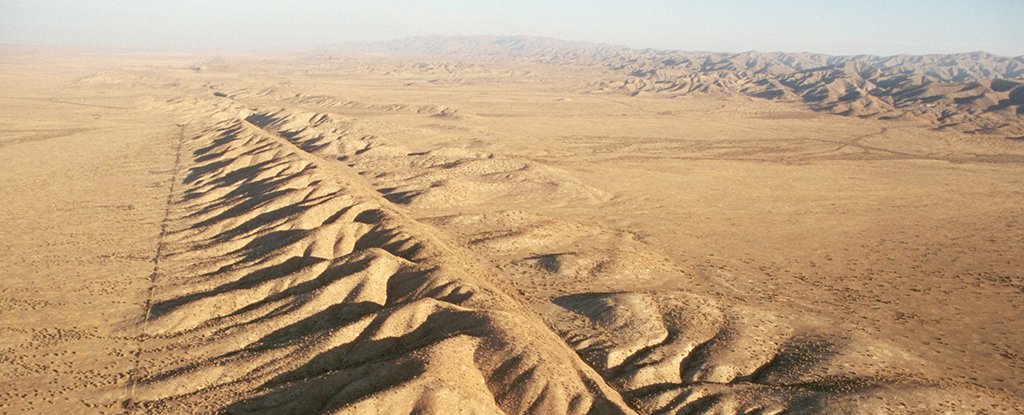Products You May Like
California is a land divided by a 1,287-kilometer-long (800 miles) rupture known as the San Andreas Fault. Running north to south through the state close to several major cities, it has been responsible for some of the US’s most devastating earthquakes.
There are regions in the state’s heart that haven’t experienced the fault’s full fury, at least not in living memory. Or so it was thought.
A new study has uncovered signs that the ‘slow and silent’ section of the famous fault line could indeed have hosted some impressive tremors fairly recently in history.
While the geologists behind the study insist we shouldn’t be alarmed, the findings should serve as a reason to pay closer attention to seismic activity in central California in the future.
“Building codes in California are now quite good. Seismic events are inevitable,” says Stephen Cox, a geologist from Columbia University in New York.
“Work like this helps us figure out what is the biggest possible event, and helps everyone prepare.”
What appears from the surface to be a single rupture in the crust is actually three distinct boundaries where the Pacific and North American tectonic plates touch.
The northern- and southern-most sections press together with titanic forces, releasing in bursts only as small sections give way to the pressure.
When that happens near major infrastructure, the results can be cataclysmic: Fires sparked by a quake in San Francisco in 1906 killed thousands; a tremor near Santa Cruz, California, measured at a magnitude of 6.9 caused more than 60 deaths in 1989.
To the far south, Los Angeles County has also seen its fair share of death and destruction as nearby sections of fault dramatically give way.
Between these two boundaries, there sits a much quieter boundary, one where the plates caress at a serene pace of 26 millimeters (about 1 inch) a year in what’s known as ‘aseismic creep’.
With little to force the plates to pause and accumulate stress in this section, there’s far less risk of a major earthquake occurring.
In fact, there’s been no record of a tremor exceeding magnitude 6 any time in recorded history. Digging deeper, there’s no sign of any such quake making it to the surface in the past 2,000 years.
That’s not to say there’s nothing to be concerned about.
“The creeping section is a difficult place to do paleoseismology, because evidence for earthquakes can be easily erased by the creep,” says Morgan Page, a seismologist with the US Geological Survey.
Our planet’s crust is a complex mash of geological machinery, with vast hidden structures and a web of interconnections between boundaries and breaks. Small changes in quiet, peaceful sections of a fault can trigger significant changes far off in other areas.
What’s more, the right kind of geological clap to the north or south could echo through the middle in ways that would allow for a shake-up of the likes we’ve never seen.
To better understand how the San Andreas Fault operates as a whole, geologists used changes to organic matter caused by friction to identify signs of major earthquakes in rocks collected from deep within the central section of the fault.
An analysis of the ratios of radioactive potassium and argon isotopes then allowed the team to estimate the timing of the quakes.
Together, the two processes revealed signs of earthquakes in a region of sedimentary rock just over 3 kilometers (about 2 miles) below the surface. Judging by the movements, the team estimates the number of the tremors rivaled the 6.9 magnitude earthquake near Santa Cruz in 1989.
“If this holds up, this is the first evidence of a big seismic rupture in this part of the fault,” says Page.
Shockingly, some of the quakes occurred less than 3 million years ago. Millions of years in the past might seem like ancient history, but Earth’s crust isn’t quick to change its stripes.
Knowing that the creeping section of the San Andreas Fault can grind its teeth when forced is evidence enough that California needs to remain ever vigilant of the monster that sleeps beneath its feet.
This research was published in Geology.
